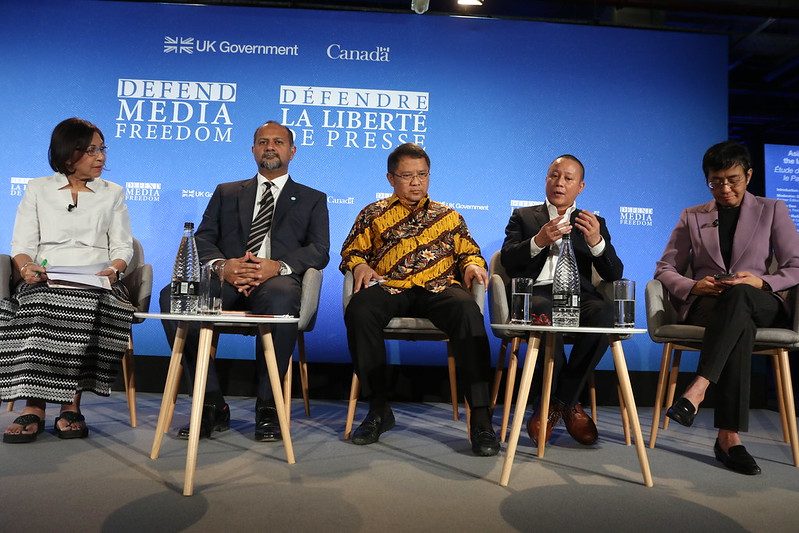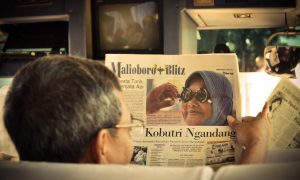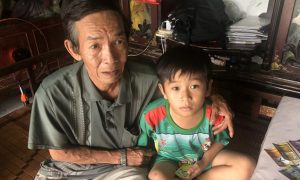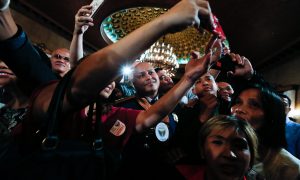*This article is based on a section in Rethinking Media Freedom and Independence: Narratives from Southeast Asia, a research report authored by Fadhilah Primandari, Samira Hassan and Sahnaz Melasandy at New Naratif.
In Southeast Asia, media freedom is deteriorating. From Singapore to Cambodia to Myanmar to Vietnam, governments are taking further measures to limit journalists’ and media outlets’ ability to publish critical and unfavourable reportage. With the exception of Timor-Leste, all Southeast Asian countries are ranked below 100 in Reporters sans frontières’s (RSF) 2021 World Press Freedom Index. Six out of eleven country leaders in the region are listed as predators of the media. Critics have argued that restrictions and attacks against the media create a chilling effect that push journalists to self-censor or limit what they can write and convey to the public. Compared to formal censorship and overt attacks against the media, self-censorship is much more difficult to detect.
Our research team at New Naratif bore these concerns in mind in the first iteration of our Media Freedom in Southeast Asia Research Project, which explores the challenges of working in the region’s media landscape. In our interviews and focus group discussions with 44 independent journalists, illustrators and media activists from or in eight Southeast Asian countries in 2021, we asked research participants whether they have refrained from touching on or discussing any particular topic in their media work. We learned that self-censorship has multiple layers and shades, and the act of censoring oneself does not always indicate weakness or lack of agency.
First, reasons to self-censor vary, from fear of reprisals from the government to cultural taboos and social sanctions. A Singaporean participant told us that her experience in having name places on the Singaporean government’s “grey list” has discouraged her from writing publicly. A Malaysian illustrator, who identified himself as queer and creates queer-themed illustrations, had refrained from exploring cultural and religious elements through his artworks due to the fear of being labelled as blasphemous. In Indonesia, discussing communism and the 1965 mass killings can amount to government and societal accusations of supporting and spreading communism, which is illegal.
Second, the act of refraining from reporting certain events does not only occur at the individual level; newsrooms can also play part in limiting what a journalist can write and publish. For example, Indonesian newsrooms led by older editors are often reluctant to publish investigative stories exposing corruption and abuses of power by high-ranking political figures. In Indonesia, where the media market is oligopolistic and many outlets are funded by oligarchs, economic ties between outlets and their funders can limit what a newsroom can report on.
Third, self-censorship can occur in various ways and to various degrees. While avoiding a certain topic altogether is a straight-forward form of self-censorship, some of our participants have other ways to avoid repercussion such as by cutting certain parts of interviews that could incriminate them or using conservative headlines to prevent too much scrutiny on the sensitive issues that are discussed in the body of the articles.
Dr Nattapoll's case is part of a broader pattern of SLAPP (Strategic Lawsuit Against Public Participation) cases.
A censored thesis then a defamation lawsuit: academic freedom in Thailand
Fourth, decisions to self-censor may vary depending on the publication language used. Some of our participants are tactical in using different languages for their publications. Writing in English can provide a stronger sense of safety due governments’ tendency to pay less attention to English publications. For example, a reporter for Prachatai English said,
“We tend to think that we can write more directly in English because we believe that English publications are not watched as much as Thai language publications.”
A Vietnamese freelance journalist told us,
“. . . the news censors don’t monitor English language publications as much as they do for Vietnamese; unless it’s like a really big story by a very big outlet that caused a lot of fuss, they don’t really pay attention so it gives me more freedom to write politically.”
Publishing in national languages may be riskier for media workers who touch on sensitive topics in their countries. Tabloid Jubi, a news outlet based in Papua which publishes in both Indonesian and English, told us that their Indonesian articles circulate faster on social media platforms which results in more reactionary responses compared to their English publications.
While these findings conform to the major literature on self-censorship that centres around the limitations on expressing critical views in the face of oppression, our conversations with illustrator participants also revealed another side to the act of self-censorship. Some said that that they need to be creative and intentional with what they draw in order to avoid reprisals which, in a context where artworks such as illustrations, paintings and comics can play a strong part in communicating information and criticism, can be directed to media workers other than journalists.
There is an art in the framing of messages through illustrations and comics. A Thai illustrator said that when he wishes to depict the monarchy or government in his art, he uses characters or symbols to represent them instead of drawing specific individuals. An Indonesian comic artist had sometimes left the “meaning-making” to his readers:
“. . . you have to work with semantics and take symbols and also ask your followers to think, to interpret what you want to deliver.”
These accounts show that there is more to self-censorship than not being able to speak up due to the fear of reprisals. While the act of not explicitly reporting certain facts may be quickly judged as self-censorship and as a sign that authoritarian policies have worked to dissuade critics, it may actually be a media worker’s strategy to resist the hostile climate that limits media freedom. In a media landscape where critical coverage and perspectives are discouraged by government authorities, efforts to publish such information are already a fight against hostile governments’ or political groups’ attempts to dominate public discourse. By intentionally devising concealment strategies that maintain the core messages that they wish to convey, some of our research participants demonstrate their commitment to continue producing critical information while avoiding punishment. By deciding on the framing and the inclusion of symbols in their artworks, our artist participants assert their agency to express criticism while at the same time “protecting” themselves and the future of their work. Against the backdrop of deteriorating media freedom, the very existence of media workers who strive for their independence and the various strategies that they do to survive are significant and should be acknowledged.
 Facebook
Facebook  Twitter
Twitter  Soundcloud
Soundcloud  Youtube
Youtube  Rss
Rss 



